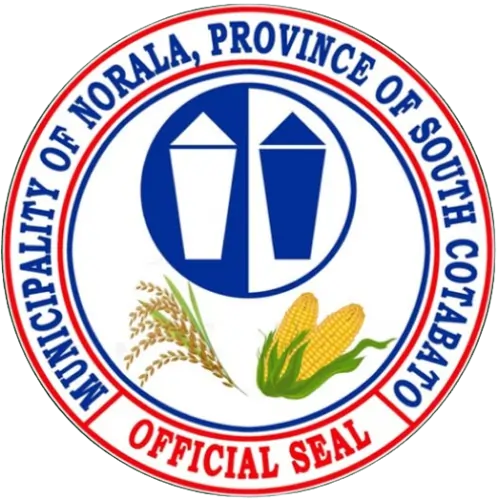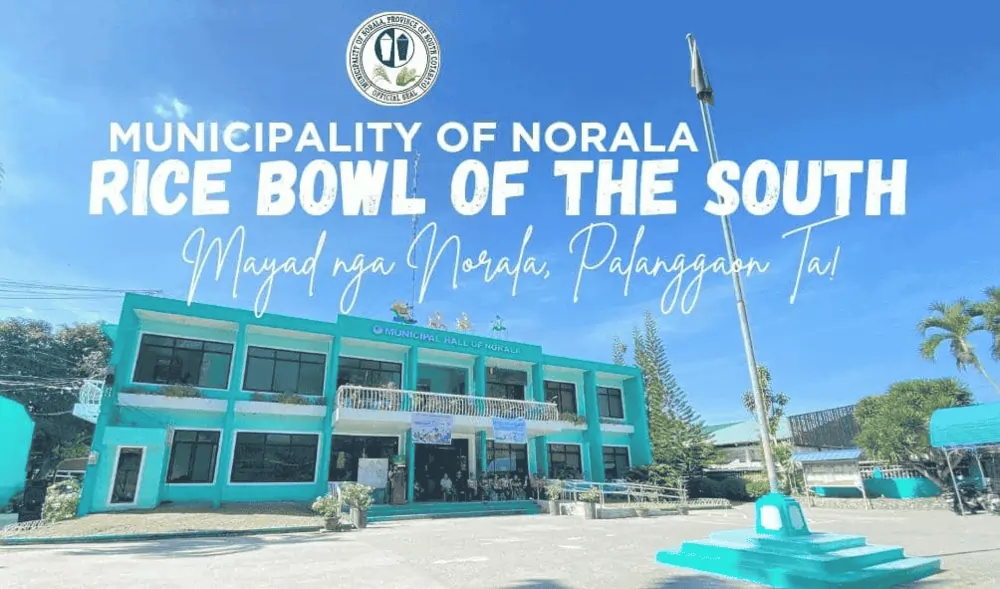
🏞 Brief History of Norala, South Cotabato
The Municipality of Norala in South Cotabato carries a history deeply rooted in resilience, agriculture, and cultural heritage. From its early beginnings as a lush wilderness to its rise as the “Rice Bowl of the South,” Norala’s journey reflects the strength of its settlers and the progress of its people.
🌿 Early Beginnings: From Wilderness to Settlement
Over six decades ago, Norala was widely recognized as a hunter’s paradise. The area was covered with thick timber groves, open grasslands, and clear streams surrounded by swampy spots called Kapaya. Wild pigs, deer, and diverse bird species thrived in this fertile land.
Geographically, Norala is nestled between the Daguma Mountain Range to the west and the Dumaguil–Puti peaks to the east. These natural barriers shielded the community from destructive typhoons and created an environment suited for farming.

Attracted by fertile plains and abundant resources, the first Christian settlers from Luzon and Visayas were brought to the area by the National Land Settlement Administration (NLSA) under General Paulino T. Santos. On April 15, 1941, these pioneers founded the Norala Settlement District, naming it after its location at the northern part of the Allah River Valley—hence, “Norala” derived from “North Allah.”
🏛 Municipal Development and Independence
Norala’s path to becoming an independent municipality was gradual. In 1946, it was classified as a barrio of the newly created Municipality of Koronadal. A year later, Datu Kudanding Camsa became the first municipal mayor of Koronadal.
By 1951, the people of Norala expressed their desire for self-governance. A historic convention was held in Barrio Katipunan in 1952, where delegates from Norala and neighboring Banga supported the call for independence.
Their dream became reality when President Elpidio Quirino signed Executive Order No. 572 on March 10, 1953, officially declaring Norala as an independent municipality. It initially included barrios such as Norala, Lopez Jaena, San Miguel, Esperanza, and others, with Barrio Norala as the seat of government.
In the following years, changes shaped its administrative structure:
- 1957: Creation of the Municipality of Isulan.
- 1980: Separation of Barangay Sto. Niño as an independent municipality.
🌾 Present-Day Norala: Rice Bowl of the South
Today, Norala consists of 14 barangays, each contributing to the municipality’s growth and community spirit:
- Poblacion
- Lopez Jaena
- San Miguel
- Esperanza
- Lapuz
- San Jose
- Liberty
- Dumaguil
- Kibid
- Matapol
- Puti
- Simsiman
- Tinago
- Benigno Aquino Jr.
As of the 2020 census, Norala has a population of 46,682 people, the majority of whom are of Ilonggo origin, a testament to its early settlement history.
With its fertile soil and favorable climate, Norala thrives as an agricultural hub—particularly in rice and corn production—which has rightfully earned it the proud title: “Rice Bowl of the South.” 🌾✨
👥 Leadership Legacy
Norala’s growth has been shaped by the vision and leadership of its public servants:
- Datu Kudanding Camsa (1953–1954)
- Fortunato Jimenea (1954–1955)
- Tomas V. Balayon Sr. (1956–1967; 1980–1986; 1988–1991)
- Restia F. Dela Cruz (1968–1979)
- Atty. Ernesto P. Felongco (1986–1987)
- Fernando S. Januto Sr. (1987–1988)
- Atty. Nelson B. Pilla (1991–2001)
- Romeo S. Januto (2001–2010)
- Victor Y. Balayon (2010–2019)
- Clemente B. Fedoc (2019–present)
Each administration left lasting contributions, building a municipality that respects its heritage while embracing innovation and progress.
🚀 Norala Today: A Growing Municipality
In 2024, Norala was officially reclassified from a third-class to a second-class municipality, a recognition of its steady economic growth and increased revenue. This milestone is not only a reflection of strong local governance but also of the collective effort of its people.
Norala today is more than just an agricultural hub—it is a thriving community that embodies its history of perseverance and transformation.
❓ Frequently Asked Questions (FAQ)
1. Why is Norala called the “Rice Bowl of the South”?
Norala earned the title because of its fertile land and climate, making it one of the top producers of rice and corn in South Cotabato.
2. When did Norala officially become a municipality?
Norala was declared an independent municipality on March 10, 1953, through Executive Order No. 572 signed by President Elpidio Quirino.
3. How many barangays does Norala have today?
Norala is composed of 14 barangays, including Poblacion, Lopez Jaena, San Miguel, Esperanza, and Benigno Aquino Jr.
⚠️ Disclaimer
- 📌 This article is for informational and community-sharing purposes only.
- 🚫 It is not affiliated with nor officially connected to the Local Government Unit of Norala.
- 📖 The article is based on the original history of Norala, but has been revised for general knowledge purposes only.